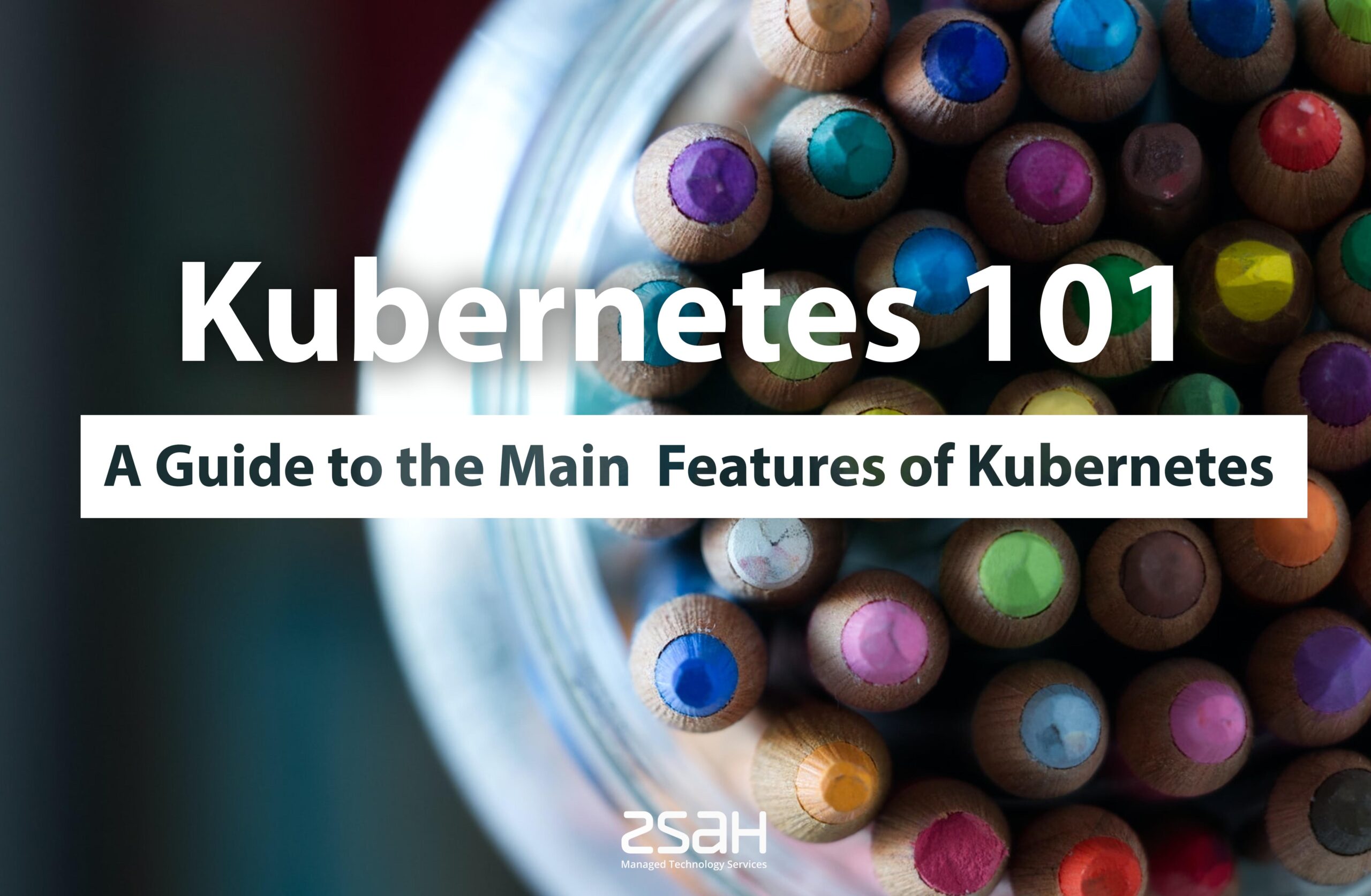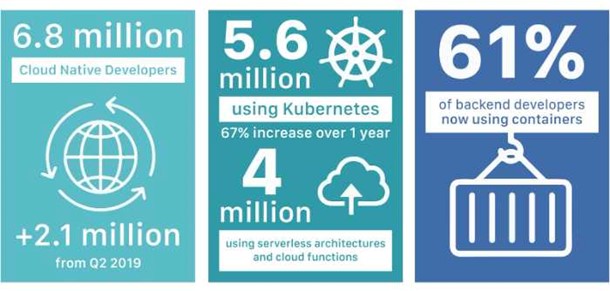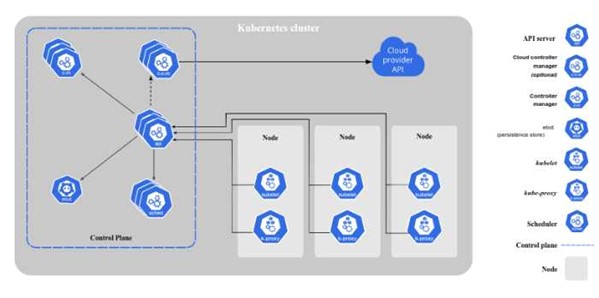Kubernetes 101: A Guide to the Main Features of Kubernetes

Kubernetes is a powerful open-source tool for managing containerised applications. It was originally designed by Google and has become the most popular container orchestration platform in use today. According to the 2021 State of Cloud-Native Development Report developed for Cloud Native Computing Foundation (CNCF) by SlashData, over 5.6 million developers are using Kubernetes, a 67% increase over the previous year.
If you have heard of Kubernetes but are not sure what it does, this guide is for you. We will explore the main features of Kubernetes and show you how to get started using it.
What Is Kubernetes?
Kubernetes, also known as K8s, is a portable, highly scalable open-source platform used to manage containerised workloads and services. It is hosted by the Cloud Native Computing Foundation and is available on GitHub.
The word "Kubernetes" is derived from the Greek term for "helmsman" or "pilot." In 2014, Google released the Kubernetes project under an open-source license. The project draws on 15 years of Google experience running production workloads as well as best-of-breed concepts and methods from the community. Some of the world's largest companies such as Amazon Web Services (AWS), Huawei, IBM, Microsoft Azure, etc. have adopted it.
Why Do You Need Containers?
If you're running a software application, chances are you're going to need some sort of container. Containers allow developers to bundle all of the components required for their application, such as libraries and other dependencies, into a single package. This way, developers can sleep well at night knowing that their program will execute on any other machine, even if the customised settings on the machine differ from the one used to write and test the code.
What Tasks Are Performed by Kubernetes?
As the industry standard for container orchestration, Kubernetes is responsible for a wide range of tasks. Perhaps most importantly, Kubernetes provides a unified platform for deploying and managing containers. This includes everything from scheduling and launching containers to monitoring their health and managing their storage. In addition, Kubernetes can be used to directly control the application environment, allowing for things like automatic scaling and rolling updates.
Kubernetes deploys and manages containers using a declarative configuration. This means that you specify the desired state of your applications, and Kubernetes will ensure that the actual state matches the desired state. This makes it easy to version your application configurations and roll back changes if necessary.
Kubernetes also provides built-in mechanisms for service discovery and load balancing, allowing you to scale your applications horizontally without changing the code or configuration. In addition, Kubernetes includes facilities for monitoring and logging, so you can troubleshoot issues with your applications more easily.
Benefits of Kubernetes
The Kubernetes platform has several benefits that make it an attractive option for deploying and managing containerised workloads.
- Automation: Kubernetes automates many of the tedious tasks associated with managing containers, such as provisioning, patching, and upgrading. This reduces the amount of time and effort required to keep a containerized environment running smoothly.
- Highly scalable: The platform is highly scalable and can easily handle large numbers of containers. This makes it an ideal solution for organisations with large-scale deployments.
- Versatile: Kubernetes is very versatile and can be used with a variety of container technologies, such as Docker and rkt. This allows organisations to use the tool that best suits their needs.
- Uniform interface: K8s provides a uniform interface for managing multiple types of containers, making it easier to scale and manage complex deployments.
- Integrations: Kubernetes also integrates well with other popular open-source technologies, such as Prometheus and Grafana, making it easy to add monitoring and logging capabilities to a containerised deployment.
- Developer community: Finally, Kubernetes is backed by a strong community of developers who are constantly improving the tool. This ensures that Kubernetes remains a reliable and stable solution for managing containerised applications.
Kubernetes Architecture
Kubernetes is a highly modular platform, with each component being responsible for a specific task. This makes it easy to add or remove components as needed and results in a platform that is very flexible and extensible.
The Kubernetes architecture consists of the following components:
- Cluster: A group of nodes that run containerised applications.
- Master node: The master node is responsible for managing the Kubernetes cluster. It provides APIs for controlling and managing the cluster, as well as for deploying and managing applications.
- etcd: etcd is a key-value store that is used to store the configuration of the Kubernetes cluster. The master node uses etcd to store the state of the cluster and to make this state available to the other nodes.
- Worker node: Worker nodes are the actual machines on which containers are deployed. Each worker node runs a kubelet, which is responsible for managing the containers on that node.
- Kube-proxy: Kube-proxy is a network proxy that runs on each worker node and is responsible for routing traffic to the correct container.
- Docker: Docker is a container runtime that is used by Kubernetes to run containers. Other container runtimes, such as rkt, can also be used.
(Image source: Kubernetes.io)
These are the main components of the Kubernetes platform. In addition, there are a number of other components that are used to provide additional functionality, such as monitoring, logging, and networking.
How zsah Can Help You Get Started with Kubernetes
If you're interested in using Kubernetes to manage your containerized workloads, zsah can help you get started. We offer several services that can assist you with the task, including:
- Kubernetes consulting: Our team of experts can help you assess your needs and determine the best way to use Kubernetes in your environment.
- Full Kubernetes hosting: We offer full Kubernetes hosting, which includes all of the tools and services you need to get started.
- Kubernetes lightweight hosting: We also offer a light-weight Kubernetes hosting option that is ideal for organisations just starting with the platform.
- Kubernetes migration: If you're already using another container orchestration platform, such as Docker Swarm or Apache Mesos, we can help you migrate your applications to Kubernetes.
To learn more about our services and how we can help you get started with Kubernetes, contact us today. We'll be happy to answer any questions you have and provide you with a free no-obligation consultation.
Sign Up Now!
For expert advice and resources – blogs, interviews, webinars, guides and more.


